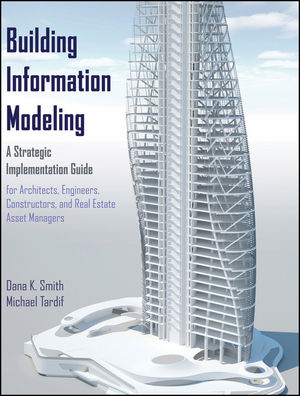Building Information Modeling: A Strategic Implementation Guide for Architects, Engineers, Constructors, and Real Estate Asset ManagersISBN: 978-0-470-25003-7
Hardcover
216 pages
April 2009
 This is a Print-on-Demand title. It will be printed specifically to fill your order. Please allow an additional 10-15 days delivery time. The book is not returnable.
|
||||||
With this strategic guide to building information modeling (BIM), you’ll learn how to implement this new technology as part of a comprehensive systems approach to the design, construction, management, operation, maintenance, and use of buildings. The authors, among the leading experts and pioneers in BIM, show you how BIM supports more streamlined, integrated, and efficient business processes throughout the life cycle of buildings, from their initial conception through their eventual retirement or reuse. The result is better quality buildings, lower construction and operating costs, shorter project turnaround times, and a higher quality of building information to support better business decisions. Moreover, they set forth a plan for incorporating BIM into every organization’s existing workflows, enabling you to take full advantage of all the benefits that BIM offers.
Everything you need to implement a BIM approach is set forth in detail, including:
-
The business case for BIM, demonstrating how it can improve collaboration, facilitate better design and construction, optimize workflow, and help reduce risk
-
Guidance for meeting the challenges of BIM such as an entrenched business culture, the proliferation of BIM tools, and the uneven rates of BIM adoption
-
The “big picture” view showing how your organization can work with business partners and fit into the building life cycle in a BIM-enabled industry
Throughout the book, sample documents and figures help you better understand the principles of BIM and how it works in practice. In addition, first-hand accounts show you exactly how adopters of BIM have gained a competitive edge.
Architects, engineers, constructors, building owners, and facility managers can turn to this book to realize the full potential of BIM and radically improve the way buildings are designed, built, operated, and maintained.




